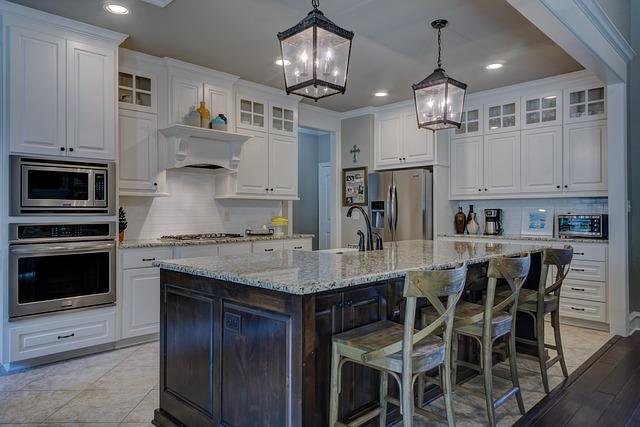Title: The Paradox of Opulence: Luxury Homes and Their Environmental Footprint
Introduction:
In an era where environmental consciousness is increasingly becoming a global priority, the real estate market finds itself at a crossroads. Luxury homes, often seen as the pinnacle of opulence and success, are now under scrutiny for their substantial contribution to environmental degradation. This article delves into the intricate relationship between high-end residential properties and their ecological impact, analyzing how the pursuit of luxury is intertwined with resource consumption and environmental strain. As we explore the nuances of this paradox, it becomes evident that the grandeur of these homes often comes at a significant ecological cost, challenging both developers and homeowners to reconcile the allure of luxury with the imperative of sustainability. Through a critical examination of construction practices, resource utilization, and energy consumption, this analysis aims to shed light on the environmental implications of luxury living, urging a re-evaluation of what it truly means to build and inhabit a home in today’s environmentally-conscious world.
Impact of Luxury Homes on Natural Ecosystems
The construction and maintenance of luxury homes often lead to significant environmental challenges, primarily due to their size and location. Deforestation, which is frequently required to make way for these expansive properties, results in the loss of crucial habitats and biodiversity. The clearing of land not only disrupts local flora and fauna but also contributes to increased carbon emissions. Additionally, the substantial use of resources like water and energy to maintain these properties further exacerbates environmental stress.
- Resource Consumption: Luxury homes typically have large lawns, pools, and other amenities that demand extensive water use.
- Energy Demand: The need for heating, cooling, and lighting vast spaces leads to higher energy consumption.
- Infrastructure Development: Building roads and utilities to reach secluded luxury homes can fragment ecosystems.
These factors collectively intensify the strain on natural ecosystems, highlighting the need for more sustainable practices in luxury real estate development. By prioritizing eco-friendly materials and renewable energy sources, the environmental footprint of these properties can be significantly reduced, ensuring a more harmonious coexistence with nature.

The Carbon Footprint of High-End Residential Developments
The construction and maintenance of luxury homes often involve the use of materials and processes that are not environmentally friendly. From the sourcing of exotic woods to the installation of energy-intensive amenities, these developments significantly contribute to carbon emissions. High-end residential properties frequently boast features such as heated pools, expansive glass facades, and extensive landscaping, all of which demand substantial energy consumption and resource utilization.
Moreover, the sheer size of these properties requires more land, leading to potential deforestation and habitat destruction. Key contributors to the environmental impact of luxury homes include:
- High energy consumption due to large living spaces and advanced technologies.
- Use of non-renewable materials such as concrete and steel.
- Increased water usage for features like fountains and extensive irrigation systems.
- Transportation emissions from importing materials and labor.
While some developments attempt to incorporate sustainable practices, the scale and opulence of luxury homes often overshadow these efforts, resulting in a significant ecological footprint.
Sustainable Alternatives for Luxury Real Estate
The pursuit of luxury in real estate doesn’t have to come at the expense of the environment. As the demand for opulent homes continues to rise, the industry must pivot towards more sustainable practices that align with eco-conscious values. Several innovative strategies are being adopted to ensure that luxury and sustainability coexist harmoniously. One approach is the integration of green building materials such as reclaimed wood, bamboo, and recycled metal, which significantly reduce the carbon footprint of construction projects. Additionally, employing energy-efficient systems like solar panels and geothermal heating not only lessens environmental impact but also offers long-term cost savings.
Furthermore, location plays a crucial role in sustainable luxury. Opting for properties that are well-connected to public transportation or include provisions for electric vehicle charging stations can dramatically cut down on emissions. By embracing these sustainable alternatives, the luxury real estate market can set a precedent for environmental stewardship without sacrificing the allure of extravagance.

Balancing Opulence with Environmental Responsibility
While luxury homes often symbolize sophistication and success, their construction and maintenance can significantly impact the environment. High-end properties typically demand substantial resources, from exotic woods to rare stones, leading to deforestation and habitat destruction. Additionally, the energy consumption required to maintain lavish amenities such as heated pools, expansive gardens, and advanced climate control systems often results in a higher carbon footprint.
However, the integration of sustainable practices in the design and operation of luxury homes can mitigate these effects. Homeowners and developers can adopt eco-friendly materials, such as reclaimed wood or recycled metal, to reduce environmental impact. The installation of solar panels and geothermal heating systems can decrease reliance on non-renewable energy sources. By prioritizing water conservation through rainwater harvesting systems and choosing native plant landscaping, opulent living spaces can harmonize with their surroundings. Ultimately, the shift towards sustainable luxury reflects not only a commitment to the environment but also an evolving standard of what true opulence entails.



